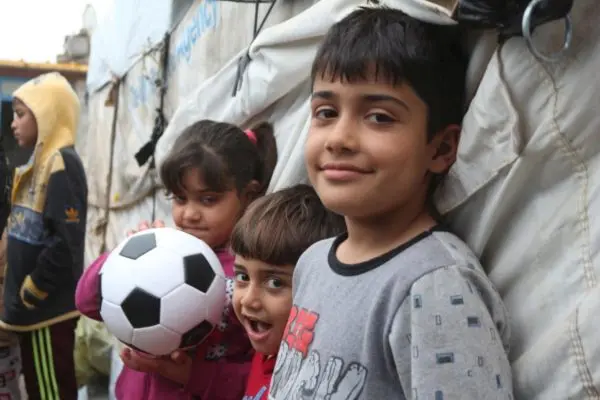
A girl heats water in Tabouqa village near Mosul, where dozens of families are living with few basic services after camp closures at the end of last year. © UNHCR/Firas Al-Khateeb
With 250,000 Iraqis still living in camps after fleeing ISIS, sudden closure of 14 sites in late 2020 forced many to return to destroyed homes and villages lacking basic services.
By Firas Al Khateeb in Nineveh governorate, Iraq
When 68-year-old famer Dahi finally returned to his village after spending more than three years in a camp south of Mosul for Iraqis who fled ISIS militants, his homecoming was far from the joyous occasion he had long imagined.
At the end of last year, the authorities announced the closure of Salamiyah camp, giving Dahi’s family and others just days to pack their things and return to Risala village near Iraq’s northwestern border with Syria. On arrival they found widespread destruction to homes and infrastructure including the small local school.
“We found it in ruins. It was abandoned, left for three or four years,” Dahi said. “The houses here are built from mud, if you leave a mud house without maintenance for a period of time it will collapse. We saw several houses that had collapsed.”
“We need help.”
The immediate challenge facing the villagers was how to provide for themselves, being unable to grow crops due to a lack of agricultural materials and equipment and without jobs or alternative sources of income. Even securing water was a major challenge, having to rely on costly deliveries by truck that were often impossible when the only dirt road into the village became a quagmire following winter storms.
The precariousness of their situation was tragically revealed when a next-door neighbour’s three-month-old daughter became feverish, and their attempts to reach the nearest town with a hospital 12 kilometres away failed after their vehicle became stuck attempting to navigate the swamp-like road.
“My neighbour Abdulhadi, his infant daughter fell sick and because he couldn’t reach a hospital due to the road, she died,” Dahi explained.
More than 6 million Iraqis were forced to flee their homes when ISIS militants took control of large swathes of territory in 2014. Some 4.8 million people have since returned home, but more than 1.2 million remain internally displaced.
Originally published by UNHCR on 27 May 2021.





